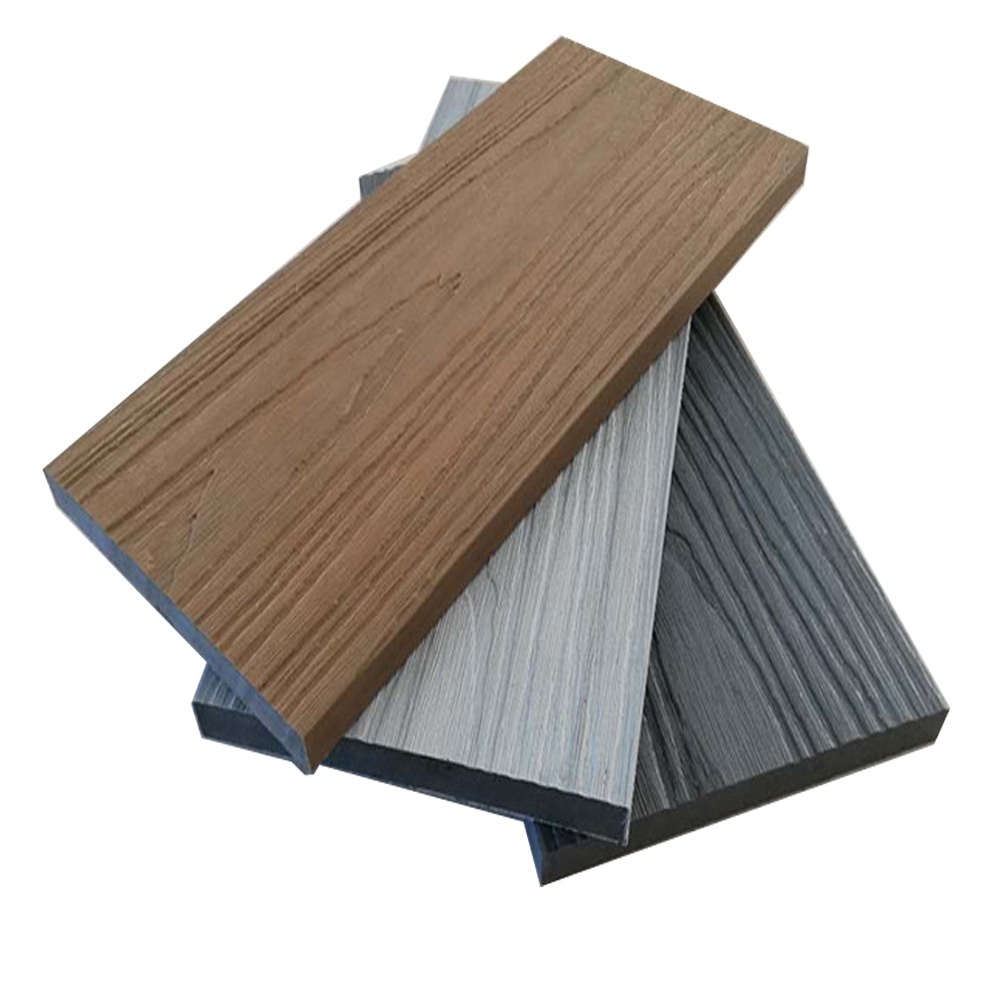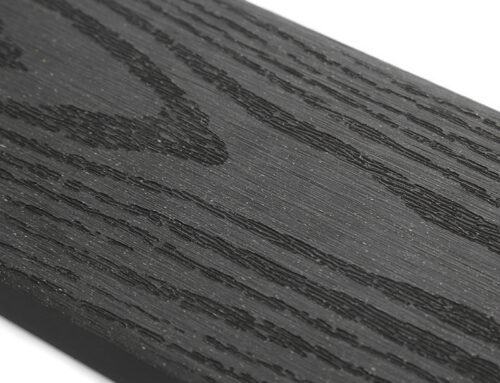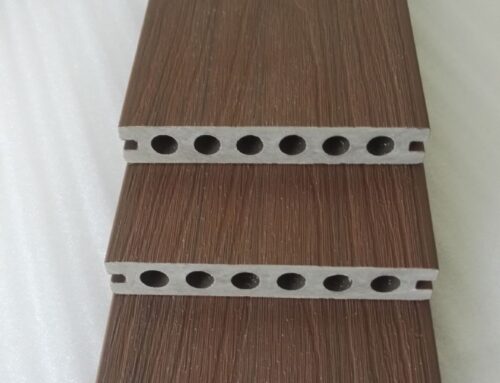The production process of WPC (Wood Plastic Composite) ceiling involves several key steps, from raw material preparation to the final product. Here’s a detailed overview of the manufacturing process:
- Raw Material Preparation
– Wood Fiber Source: The primary raw materials for WPC are wood fibers and plastics. Wood fibers can be sourced from sawmill waste, wood chips, or recycled wood products. Common types of wood used include pine, cedar, or hardwood.
– Plastic Resin: The plastic component is typically made from recycled plastics such as polyethylene (PE) or polypropylene (PP). Recycled plastics are often preferred to reduce environmental impact.
– Additives: Various additives may be used to enhance the properties of the WPC, including:
– Coupling Agents: To improve the bonding between wood fibers and plastic.
– UV Stabilizers: To prevent fading from sunlight exposure.
– Antimicrobial Agents: To inhibit mold and mildew growth.
– Colorants and Dyes: To achieve the desired aesthetic appearance.
- Mixing
– Blending: The prepared wood fibers and plastic pellets are combined in a specific ratio (usually around 60-70% wood fibers to 30-40% plastic) along with additives.
– Processing: This mixture is typically processed using a high-shear mixer to ensure uniform distribution of materials and proper dispersion of additives.
- Extrusion
– Feeding the Mixture: The blended material is fed into an extruder, which is a machine that melts and shapes the mixture.
– Heating and Melting: The extruder uses heat and pressure to melt the plastic and combine it with the wood fibers. This process also activates the coupling agents, improving the bond between the wood and plastic.
– Shaping: The molten mixture is forced through a die to shape it into the desired profile for the ceiling panels. The die determines the cross-sectional shape of the final product.
- Cooling and Solidifying
– Cooling: After exiting the extruder, the newly formed WPC panels pass through a cooling system, often involving water baths or air cooling. This process helps solidify the material and maintain its shape.
– Cutting: Once cooled, the continuous WPC sheet or plank is cut into standard sizes based on customer specifications or market requirements.
- Surface Finishing
– Texturing: The surface of the WPC panels may be textured or embossed to achieve a wood-like appearance or other desired finishes. This can be done using rollers or specialized machinery during the extrusion process.
– Coating: Some manufacturers apply protective coatings to enhance UV resistance, improve durability, and provide additional aesthetics. This can involve spraying or dipping the panels in protective solutions.
- Quality Control
– Inspection: The finished WPC panels undergo rigorous quality control inspections to check for consistency in color, size, thickness, and surface finish. Any defective panels are removed from the production line.
– Testing: Some manufacturers perform additional testing for properties such as moisture resistance, fire resistance, and mechanical strength to ensure compliance with industry standards.
- Packaging and Shipping
– Packaging: The finished WPC ceiling panels are carefully packaged to prevent damage during transportation. This often involves stacking the panels and using protective wrapping or strapping.
– Shipping: Once packaged, the panels are shipped to distributors, retailers, or directly to customers.
Conclusion
The production of WPC ceilings combines the benefits of wood and plastic, resulting in a durable, aesthetically pleasing, and environmentally friendly material. Each step in the production process is crucial for ensuring the quality and performance of the final product, making WPC ceilings a popular choice in both residential and commercial applications.






Leave A Comment